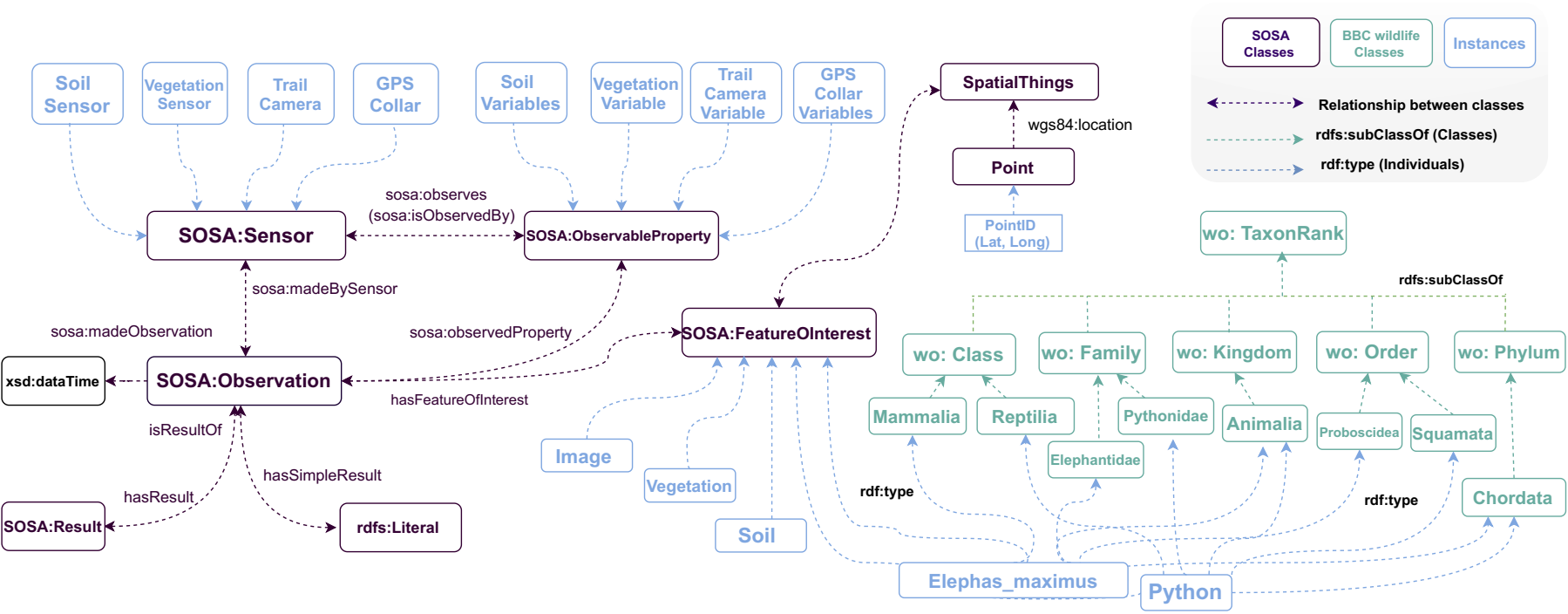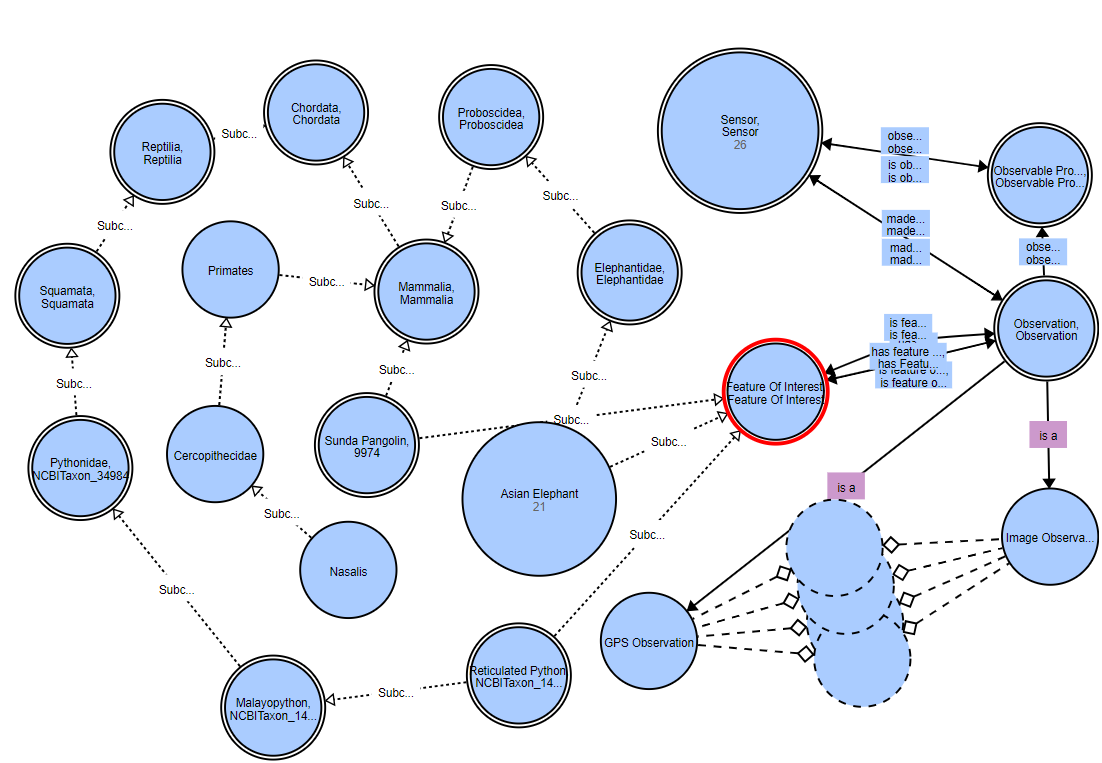FOO Implementation
Contents
FOO Implementation#
The main goal of FOO is to enable standard data sharing between various computer systems and applications- in addition to providing unified access to heterogeneous wildlife data. To incorporate diverse wildlife datasets from various sources, FOO standardises these data entities and formalises their semantics. It also enables applications for structured data mining, machine learning, and artificial intelligence. Classes and relationships were reused from SOSA and the BBC Wildlife Ontology since they had enough features to model the concepts we proposed (i.e., instances or individuals). With the ontology stakeholders, we built conceptual models (i.e., diagrams) and debated them. FOO was encoded in Web Ontology Language (OWL), edited it with Protégé, and pipeline (i.e., Python codes) were written to serialise the datasets that populated it.

FOO Heavy-weight Model#

FOO populated with four RDF graphs (FOO Knowledge Graph)#

